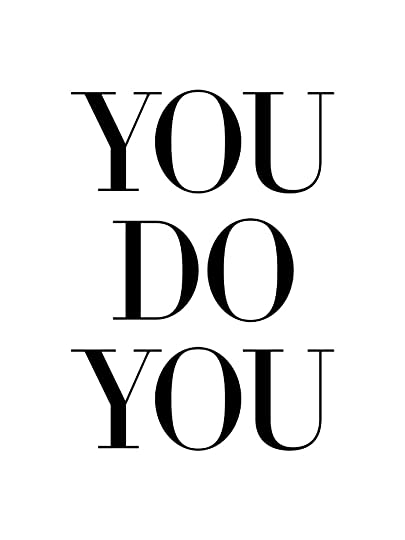Are you facing chaos and uncertainty in your life and work now? Finding it hard to manage things or lead? You’re not alone.
You may have noticed a few disruptions lately:
- economic instability (including tariff uncertainty and supply chain disruptions)
- political polarization and the erosion of democratic norms
- technological disruption (including AI risks, scams, deepfakes, and more)
- geopolitical conflicts (including wars in Ukraine and the Middle East)
- climate change and extreme weather events
Such disruptions come and go, but if you let them, they can have brutal impacts on your life, work, and leadership. Chaos and uncertainty can cause:
- anxiety and stress
- bad decisions
- lost energy
- blocked creativity
- damage to your health
- harm to your relationships
- burnout
- lost perspective
“When we least expect it, life sets us a challenge to test our courage and willingness to change; at such a moment, there is no point in pretending that nothing has happened or in saying that we are not ready. The challenge will not wait. Life does not look back.” -Paolo Coelho, Brazilian novelist
Can you keep a level head despite all the challenges? Can you maintain your quality of life?
Can You Become a Clutch Player?
One way to think about this comes from the world of sports. “Clutch players” are those who consistently perform well when there’s a lot on the line. Think of athletes known for performing remarkably well even under high pressure:
Biles, Bolt, Borg, Brady, Curry, Federer, Gretzky, Hamm, Jokic, Jordan, Jeter, Kobe, LeBron, Messi, Montana, Navratilova, Pele, Ronaldo, Serena, Steffi, Tiger, Wambach

Like these greats, how can you stay calm in the storm?
How to Thrive amidst Chaos and Uncertainty
Here are 12 major things you can do to thrive in life and work amidst chaos and uncertainty:
Develop a Routine
Routines help you maintain a sense of normalcy. They give your life a rhythm and sense of stability even during jumbled days. Keep a consistent sleep schedule and exercise schedule, take regular breaks, and set clear work spans.
Lean on Good Habits
What helps get your mind off work? What energizes you? What restores and replenishes you? Is it walks? Reading? Hiking? Meditation? Prayer? Gardening? Yoga? Music? Lean on your good habits and you’ll find that they help you weather the storm.
Take Care of Your Health
Your health should be a non-negotiable top priority. You’ll need it all the more when things are in disarray. Don’t neglect these essential health practices:
- Exercise & Movement: commit to daily movement—whether it’s a walk, stretch, or workout—to ground your mind, release stress, and reclaim a sense of control. It’s deeply restorative on many levels.
- Food & Nutrition: nourish your body with a diverse array of natural foods to boost your energy and fuel your mind with essential nutrients and hydration.
- Sleep: have a calming bedtime routine and stick to a consistent schedule, giving your mind and body the reset they need to face each day’s challenges. Poor sleep will only dampen your mood and prevent you from responding effectively to difficulties.
- Getting Outside and Being in Nature: step outside—even briefly—to clear your head and notice the beauty around you. The natural rhythm of things. Go on walks, hikes, runs, bikes, or park, lake, or beach visits. And why not with a friend?
Connect with Friends and Loved Ones
Spending time with a trusted friend or colleague can raise your spirits and help you see challenges from a new perspective. The same is true for mutual support groups. (See our article, “The Power of Small Groups—And How to Run Them.”) Healthy support systems are like strong roots that keep you grounded, especially when life feels uncertain. Resist the temptation to shrink back into a cocoon. Loneliness and isolation are insidious.
Focus on What You Can Control
Uncertainty often triggers anxiety. You may feel like you’re losing control or unable to cope. Redirect your energy to things within your influence—like your schedule, mindset, habits, and responses.
Return to Your Safe Harbor
What are the things that ground you and bring you back home to yourself when there are stormy seas?
- Do you have a clear sense of your purpose—of why you’re here and why you get up in the morning?
- Are you aware of your core values—what’s most important to you and your core beliefs—and are you upholding them in your life?
- To what extent are you using your strengths in your life and work?
- Are you integrating your passions—things that consumes you with palpable emotion over time—into your life and work regularly?
- To what extent are you engaging deeply with your faith or spirituality (e.g., through prayer, worship, contemplation, sanctuary, nature appreciation, fasting, or other practices and traditions)?
Have a Bias toward Action
Avoid the trap of analysis paralysis. It’s likely to accelerate your anxiety. Choosing action over endless deliberation helps you regain momentum through the power of progress. Even small steps forward build confidence and reveal new learnings or possibilities.
Maintain Perspective
Rise above the fray and see the bigger picture to avoid getting lost in the weeds of confusion and setbacks. Recall that challenges are only part of the journey and not the whole story.
Keep Growing and Giving
Continue learning new skills. Reflect on what life may be teaching you. And don’t stop giving to others in ways large or small. When you remain committed to growth and generosity, you can shift from feeling powerless to purposeful.
Reframe Challenges as Growth Opportunities
Reframe things from difficulties or defeats to challenges or opportunities. Chances to learn and grow. Watch how managing your mindset can build your confidence and fuel your motivation.
Keep Your Hope Alive
Despite all the chaos and uncertainty, can you maintain a powerful and abiding hope that you’ll be okay and that things will get better if you stay the course and do your best? Why not choose hope and faith over resignation and despair?
Take Full Responsibility
Things may be tough for you now, and you may not have much visibility into how things will work out. Even so, are you taking full responsibility for the choices you make and for the conditions of your life—regardless of what has happened and why? It’s still your life to lead as you see fit.
More Things You Can Do
Beyond the major things above, there are also smaller but still impactful things you can do to help navigate the chaos and uncertainty. For example:
- limit your intake of negative news
- set daily priorities
- continue engaging in your hobbies and other fun activities
- avoid the temptation to over-index on work
- break work into small steps to keep things manageable
- take frequent breaks
- remain grateful for the things you do have
- give yourself grace and don’t judge yourself too harshly
- practice meditation and mindfulness
- journal to get your feelings out of your system and onto paper
Conclusion
In the midst of all the chaos and uncertainty around us, you have more power than you think. Power to survive and thrive. By leading yourself well and engaging in renewal practices, you can create order and stability from the inside out. These practices don’t stop the storms, but they help you stand strong through them.
Will you be unstable and unmoored or resilient and ready for whatever life brings you? The choice is yours. Here’s to thriving amidst chaos and uncertainty. Wishing you well with it.
–Gregg

Tools for You
- Traps Test (Common Traps of Living) to help you identify what’s getting in the way of your happiness and quality of life
- Quality of Life Assessment so you can discover your strongest areas and the areas that need work, then act accordingly.
- Leadership Derailers Assessment to help you identify what’s inhibiting your leadership effectiveness
Related Articles
- “Personal Resilience and Self-Care in Hard Times”
- “Ten Keys to Self-Leadership”
- “Leading through Chaos and Uncertainty”
- “The Power of Authentic Alignment in Your Life”
- “The Problem with Neglecting Our Inner Life”
- “Leading in a Crisis”
- “How to Come Back Even Stronger from a Crisis”
Postscript: Inspirations on Thriving amidst Chaos and Uncertainty
- “The only way to make sense out of change is to plunge into it, move with it and join the dance.” -Alan Watts, British philosopher
- “In life itself, there is a time to seek inner peace, a time to rid oneself of tension and anxiety. The moment comes when the striving must let up, when wisdom says, ‘Be quiet.’ You’ll be surprised how the world keeps on revolving without your pushing it. And you’ll be surprised how much stronger you are the next time you decide to push.” -John W. Gardner, public official and political reformer
- “Having a readily available sanctuary provides an indispensable physical anchor and source of sustenance. Too often under stress and pressed for time, our sources of sanctuary are the first places we give up.” -Ronald A. Heifetz and Marty Linsky, leadership authors
- “At a deeper level, we need ‘sanctuary’ in our lives: places and practices of peace that restore our hearts. Places of quiet and tranquility. Together, renewal and sanctuary can lead to serenity. Beyond the striving, beyond the chase, beyond the willfulness, there is an acceptance, a yielding, a comfort with the present moment and a willingness to see things for what they are and ride with the flow of life. The serenity beyond the stress and struggle.” -Gregg Vanourek, “Ten Keys to Self-Leadership”
+++++++++++++++++
Gregg Vanourek is a writer, teacher, and TEDx speaker on personal development and leadership. He is co-author of three books, including LIFE Entrepreneurs: Ordinary People Creating Extraordinary Lives (a manifesto for living with purpose and passion) and Triple Crown Leadership: Building Excellent, Ethical, and Enduring Organizations (a winner of the International Book Awards). Check out his Best Articles or get his monthly newsletter. If you found value in this article, please forward it to a friend. Every little bit helps!

























